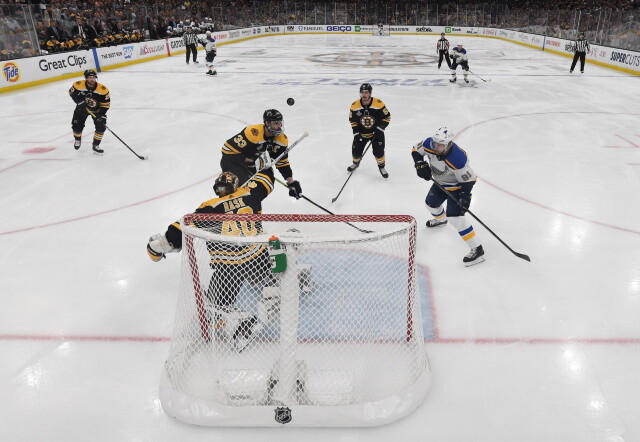According to a report from the Associated Press, major league teams spent approximately $4.05 billion on player payrolls in 2021. The AP indicates that’s a 4% drop relative to 2019 — the most recent 162-game season — and the lowest full-season tally since 2015’s $3.9 billion. In raw dollars, there was a $167.69M drop in spending on players between 2019 and 2021, writes Maury Brown of Forbes.
It’s not surprising to see team spending dip. The 2020 season was played with essentially no fan attendance as a result of the COVID-19 pandemic. A few ownership groups publicly lamented the loss of gate revenues last year, and free agent spending was chilled a bit last offseason. The value of the qualifying offer — calculated as the average of the 125 highest salaries around the league — also dipped from $18.9M to $18.4M between 2020 and 2021, suggesting that spending at the top of the market took a slight step back.
That said, attributing the spending downturn entirely to the pandemic feels a bit simplistic. According to the AP, the league record for player payrolls (a bit less than $4.25 billion) was set in 2017. The league saw slight reductions in spending on players in each of 2018 and 2019, although it had been slated for a new all-time high in 2020 before the season was shortened and player pay was prorated.
However much one wants to attribute the 2020-21 decrease in spending to the pandemic, those figures will no doubt be of interest to the player’s union. While spending at the top of the market took a small step back last year, there’s been a more dramatic decrease for the average player over the past few seasons. In April, the Associated Press found that the median salary of major league players has fallen 18% since 2019 and 30% since 2015.
That’s largely a reflection of how many teams have approached roster construction over the past few years. By and large, clubs have continued to pay big money for elite talent, but they’ve become more reluctant to invest in players with closer to average production. Star players have continued to set richer precedents and free agency was quite strong in the weeks leading up to the lockout, but the gap has widened between top-of-the-market stars and mid-tier veterans and young players. Recognizing that a roster can be built most cost-effectively by leaning on young talent, front offices in recent years have spent more heavily on premier players, knowing that they can rely on pre-arb players and non-star veterans making lower salaries to provide adequate value on the rest of the roster.
As Chelsea Janes of The Washington Post writes in a piece that’s worth checking out in full, the disconnect between stars, mid-tier veterans and young players presents a challenge in collective bargaining. The league has pointed to the top-end salaries as evidence of a robust economic system. In the letter he penned to fans following the lockout announcement, Commissioner Rob Manfred wrote “Baseball’s players have no salary cap and are not subjected to a maximum length or dollar amount on contracts. In fact, only MLB has guaranteed contracts that run 10 or more years, and in excess of $300M.”
MLB’s proposal of a salary floor in collective bargaining discussions suggests some willingness on the league’s part to incentivize spending on mid-tier players. That was contingent on drastically reduced luxury tax thresholds that’d limit spending on top-end players, though.
Rather than merely redistributing salaries, the MLBPA has focused on raising the players’ overall share of revenues. “MLB’s negotiators are open to changing the way younger players are compensated but do not necessarily believe players need to receive a broader share of the revenue pie to rectify those disparities,” Janes writes. “The union, meanwhile, wants to change the way players are compensated in large part by injecting a greater percentage of revenue back into player compensation — helping those at the bottom without costing those at the top.”
Union members could have differing interests based on their financial status. Yet as Janes notes, a number of key player representatives within the MLBPA reside squarely on the top end. Gerrit Cole, Marcus Semien, and Max Scherzer are among the sport’s premier athletes advocating for a market that is kinder to their youngest and oldest peers. This advocacy isn’t lost on others on the union side, including retired reliever and self-proclaimed “middle-of-the-pack guy,” Jerry Blevins. The former big league southpaw tells Janes having players with nine-figure salaries trying to push forward salaries for lower-tier vets “makes a big difference because they represent us, the normal guy, even though at the same time they’re benefiting from the system as it’s set up.”
The AP and Forbes each provide additional data on team spending habits. According to the AP, ten teams ended the season with a payroll under $100M, a figure not seen since 13 teams ducked under that mark in 2014. The Pirates checked in with the lowest end-of-year payroll at $50M, the lowest figure for any team since 2013. The Dodgers and Yankees were the only teams to exceed $200M in actual payroll. The Dodgers and Padres, meanwhile, were the two clubs whose commitments exceeded the luxury tax threshold. (CBT calculations are based on deals’ average annual values as opposed to year-by-year payouts, explaining why the Padres paid the tax while the Yankees didn’t in spite of New York having the higher actual payroll).
Eleven teams raised their payrolls between 2019 and 2021, according to Forbes. The Padres’ 77% jump from around $104M to approximately $184M was easily the biggest. The Guardians had the biggest decline over that stretch, dipping from $123M in 2019 to $53M this past season.





